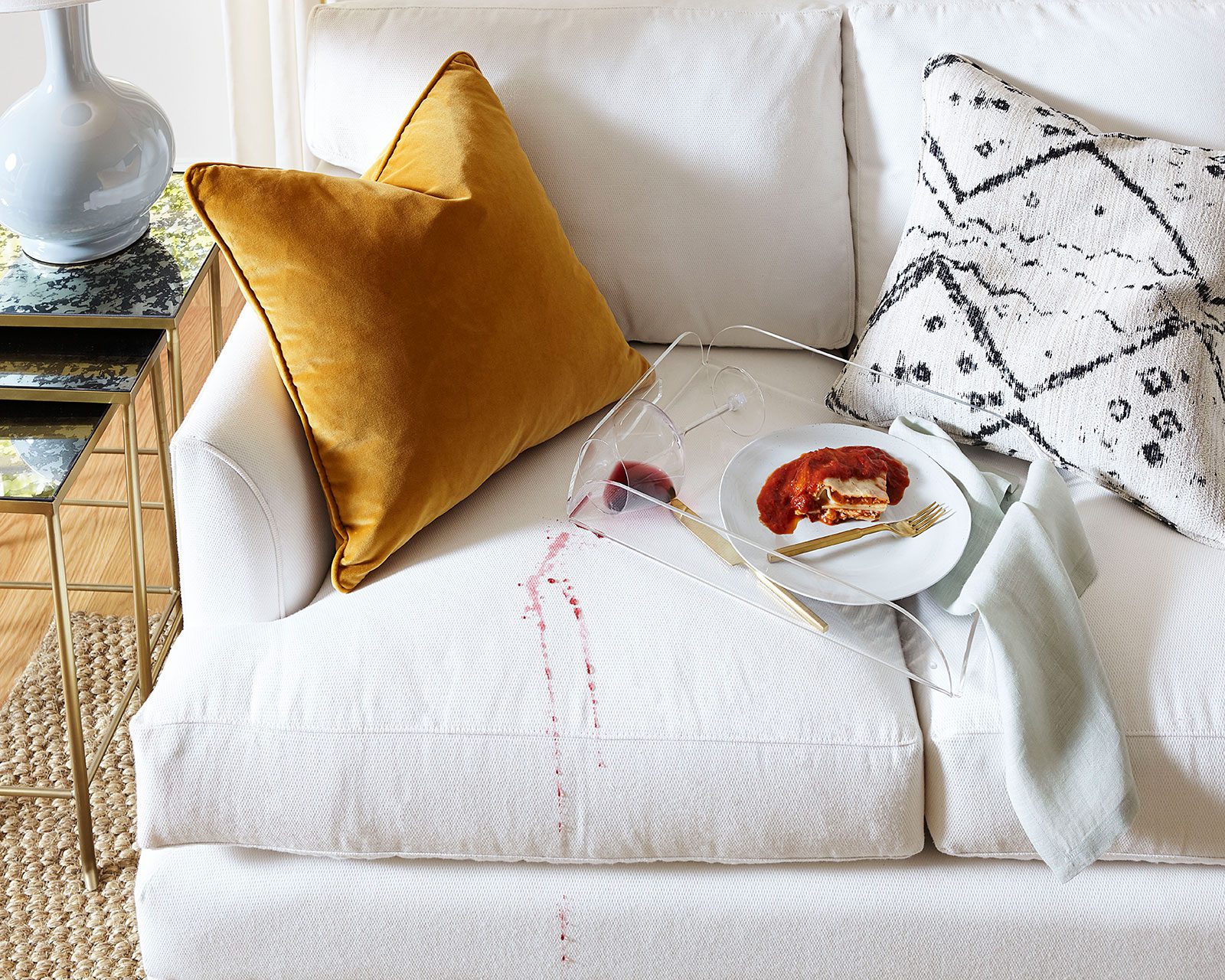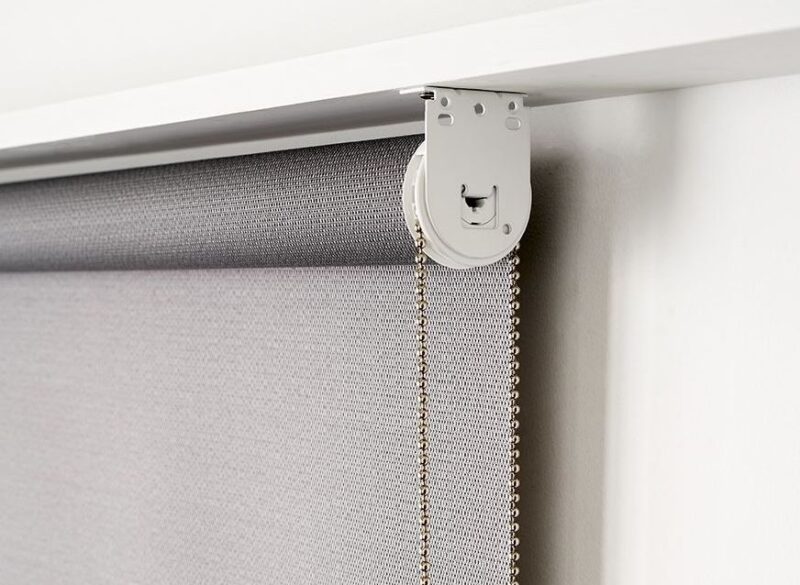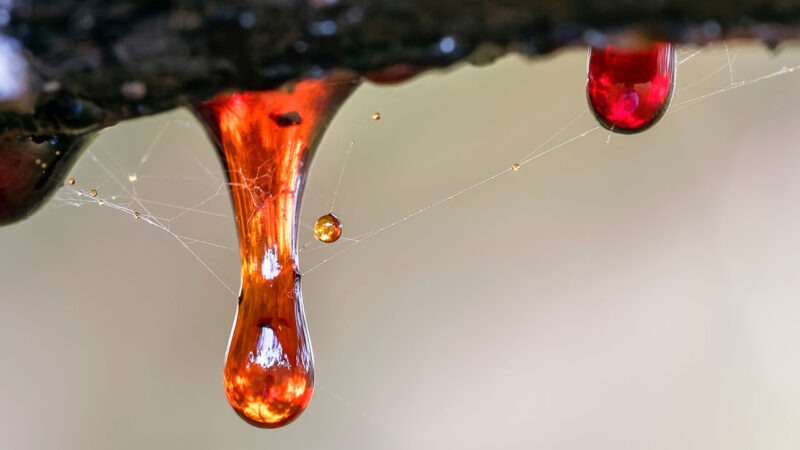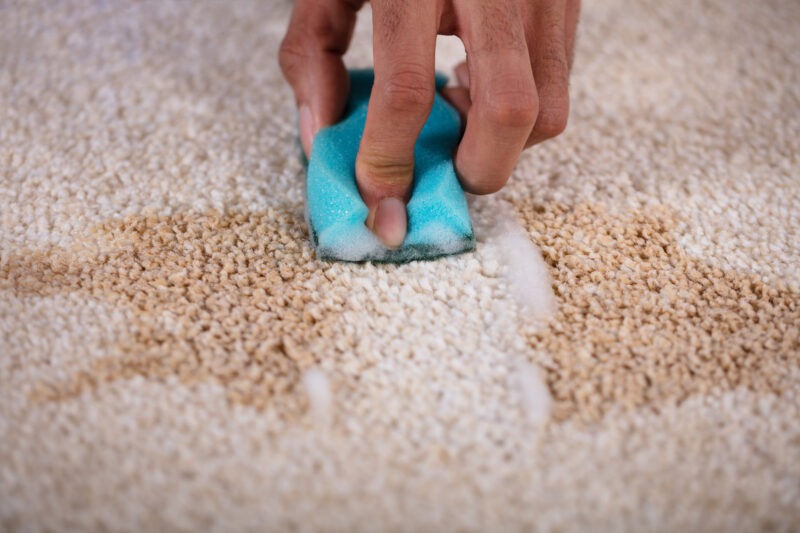How To Clean A White Couch

White couches are a stylish addition to any home, but let’s be honest — they can be a magnet for unwanted dirt, spills and stains. The good news is, with the right care and cleaning methods, you can keep your white couch looking as good as new. In this blog, we’ll walk you through top tips for cleaning white couches made with different materials.
let’s get started!
How to clean a white couch made of leather
Leather couches are elegant and luxurious, but they require special care to maintain their beauty. Here’s how to keep your white leather couch clean and pristine:
Materials needed
- Soft cloths
- Mild soap or leather cleaner
- Water
- White vinegar
- Baking soda (for stains)
- Leather conditioner
Step-by-step cleaning process for leather couches
- Dust and vacuum — Begin by dusting your couch with a dry, soft cloth to remove loose dirt. Use a vacuum with a brush attachment to clean the crevices and seams.
- Prepare the cleaning solution — Mix a few drops of mild soap with water or use a commercial leather cleaner.
- Spot test — Before applying the cleaner to the entire couch, test it on a small, hidden area to ensure it doesn’t damage the leather.
- Clean the couch — Dampen a cloth with the cleaning solution, wring it out to avoid soaking the leather and gently wipe the couch’s surface.
- Remove stains — Make a paste with baking soda and water for stubborn stains. Apply it to the stain, let it sit for a few minutes, then gently rub it off with a damp cloth.
- Rinse and dry — Wipe the couch with a clean, damp cloth to remove any soap residue. Then, dry using a soft towel to prevent water spots.
- Condition the leather — Apply a leather conditioner to keep the leather supple and prevent cracks. This step is crucial for maintaining the couch’s appearance and longevity.
How to clean a white couch made from faux leather
Faux leather couches offer a stylish look similar to real leather and are generally easier to maintain. Here’s how to clean and care for your white faux leather couch.
Materials needed
- Soft cloths
- Mild soap or faux leather cleaner
- Water
- White vinegar (for tough stains)
- Baking soda (optional)
- Faux leather conditioner
Step-by-step cleaning process for faux leather couches
- Dust and vacuum — Use a soft cloth to dust off the surface and a vacuum with a brush attachment to remove dirt from the crevices.
- Prepare the cleaning solution — Mix mild soap with water or use a cleaner specifically designed for faux leather.
- Spot test — Test the cleaner on a hidden spot to ensure it doesn’t damage the faux leather.
- Clean the couch — Dampen a cloth with the cleaning solution, wring it out well and wipe the couch gently.
- Remove stains — For tougher stains, use a mixture of equal parts water and white vinegar. Apply it to the stain, let it sit briefly, then wipe it off.
- Rinse and dry — Wipe the couch with a damp cloth to remove any soap residue, then dry it with a towel.
- Condition the faux leather — Use a faux leather conditioner to maintain its appearance and flexibility. This step helps to prevent cracks and peeling.
How to clean a white couch made from fabric
Fabric couches are cosy and comfortable, but they can be more challenging to keep clean. Follow these steps to keep your white fabric couch looking fresh and bright:
Materials needed
- Vacuum cleaner
- Mild detergent
- Water
- Baking soda
- White vinegar
- Soft brush or sponge
Step-by-step cleaning process for fabric couches
- Vacuum thoroughly — Use a vacuum with an upholstery attachment to remove dust and debris from the fabric and crevices. This helps prevent dirt from settling deeper into the fabric when you clean it.
- Prepare the cleaning solution — Mix mild detergent with water to create a gentle cleaning solution.
- Spot test — Always test the cleaning solution on a small, inconspicuous area first to ensure it doesn’t discolour or damage the fabric.
- Clean the couch — Gently scrub the fabric with a soft brush or sponge dipped in the cleaning solution. Be careful not to overwet the fabric, as this can lead to water stains and mould growth.
- Tackle stains — For stains, make a paste of baking soda and water. Apply it to the stain, let it sit for a few minutes, then gently scrub with a soft brush or a sponge and wipe it off with a damp cloth.
- Rinse and blot dry — Use a clean, damp cloth to remove soap residue. Blot dry with a towel to remove excess moisture.
- Deodorise — Sprinkle baking soda on the couch, let it sit for 15 minutes, then vacuum it off to remove odours and freshen up the fabric.
How to clean a white couch made from suede
Suede couches have a unique, luxurious texture, but they can be tricky to clean. Here’s how to keep your white suede couch looking its best:
Materials needed
- Suede brush or soft cloth
- White vinegar
- Baking soda
- Suede cleaner (optional)
Step-by-step cleaning process for suede couches
- Brush the couch — Use a suede brush to remove surface dirt and restore the nap of the suede. Brushing in different directions can help lift dirt and maintain the suede’s texture.
- Spot test — Before applying any cleaning solution, conduct a spot test on a small, discreet area to ensure it doesn’t damage the suede.
- Clean the couch — Dampen a cloth with white vinegar and gently wipe the stained areas. Be careful not to over-saturate the suede, as this can cause water spots.
- Use baking soda for tough stains — Apply baking soda to stains, let it sit for a few hours to absorb the stain, then brush it off with a suede brush.
- Revitalise the suede — After cleaning, use a suede brush to bring back the soft texture and restore the nap.
How to clean a white couch made from microfibre
Microfibre couches are durable and stain-resistant, making them popular for busy households. Here’s how to keep your white microfibre couch clean and fresh:
Materials needed
- Vacuum cleaner
- Mild detergent
- Soft cloths or sponges
- Soft brush
Step-by-step cleaning process for microfibre couches
- Vacuum the couch — Start by vacuuming the couch to remove dust and debris. Use a vacuum with an upholstery attachment for best results.
- Clean the couch — Combine warm water and gentle dishwashing liquid and scrub with a soft cloth or sponge. For best results, work in small sections.
- Rinse and dry — Wipe the couch using a clean, damp cloth to remove any residue. Allow the area to dry completely, then use a soft brush to restore the microfibre’s texture.
Trust the professionals at Jim’s Cleaning for cleaning white couches
While DIY solutions may be tempting, it’s still best to get your white couch looking brand-new with the help of our professional upholstery cleaning team at Jim’s Cleaning. With over 25 years of professional upholstery cleaning experience and affordable rates, you can trust our fully insured, police-checked team will ensure you’re 100% happy with the quality of the job. Call us today to request a free quote.



